An exhibition to see music, that is, to observe what were the outcomes of the insights that music provided to the visual arts between the 19th and 20th centuries. This is the goal of Seeing Music. Art from Symbolism to the Avant-Garde, scheduled from April 26 to July 4, 2021 in the rooms of Palazzo Roverella in Rovigo and curated by Paolo Bolpagni, in collaboration with Francesco Parisi and Benedetta Saglietti. The Rovigo exhibition addresses a theme, that of the relationship between music and the visual arts, which has experienced renewed critical fortune in recent decades but has not been the subject of major exhibitions capable of presenting largomento in its fundamental aspects. The exhibition is therefore a novelty in that it represents a wide-ranging exhibition devoted to the many relationships between these two forms of expression, with a chronological span from the Symbolist season to the 1930s. The exhibition is organized by the Fondazione Cassa di Risparmio di Padova e Rovigo with the Accademia dei Concordi and the Municipality of Rovigo.
“At the end of the 19th century,” Bolpagni explains, there was "the emergence throughout Europe of an artistic strand inspired by the works and aesthetic theories of a charismatic and fascinating composer like Richard Wagner: the Nibelung myths, the legend of Tristan and Isolde, the epic of the Grail, all often seasoned with esoteric implications. Beginning in the first decade of the twentieth century, however, the rediscovery of Johann Sebastian Bach and the fascination exerted by the purity of his counterpoints came to replace the Wagnerian model, not only in the field of music. In fact, the path in the direction of abstractionism will be reflected in the aspiration of painting to achieve limmateriality of Bach’s fugues, alluded to in the titles of works by Vasily Kandinsky, Paul Klee, Frantiek Kupka, Félix Del Marle, Augusto Giacometti and many others."
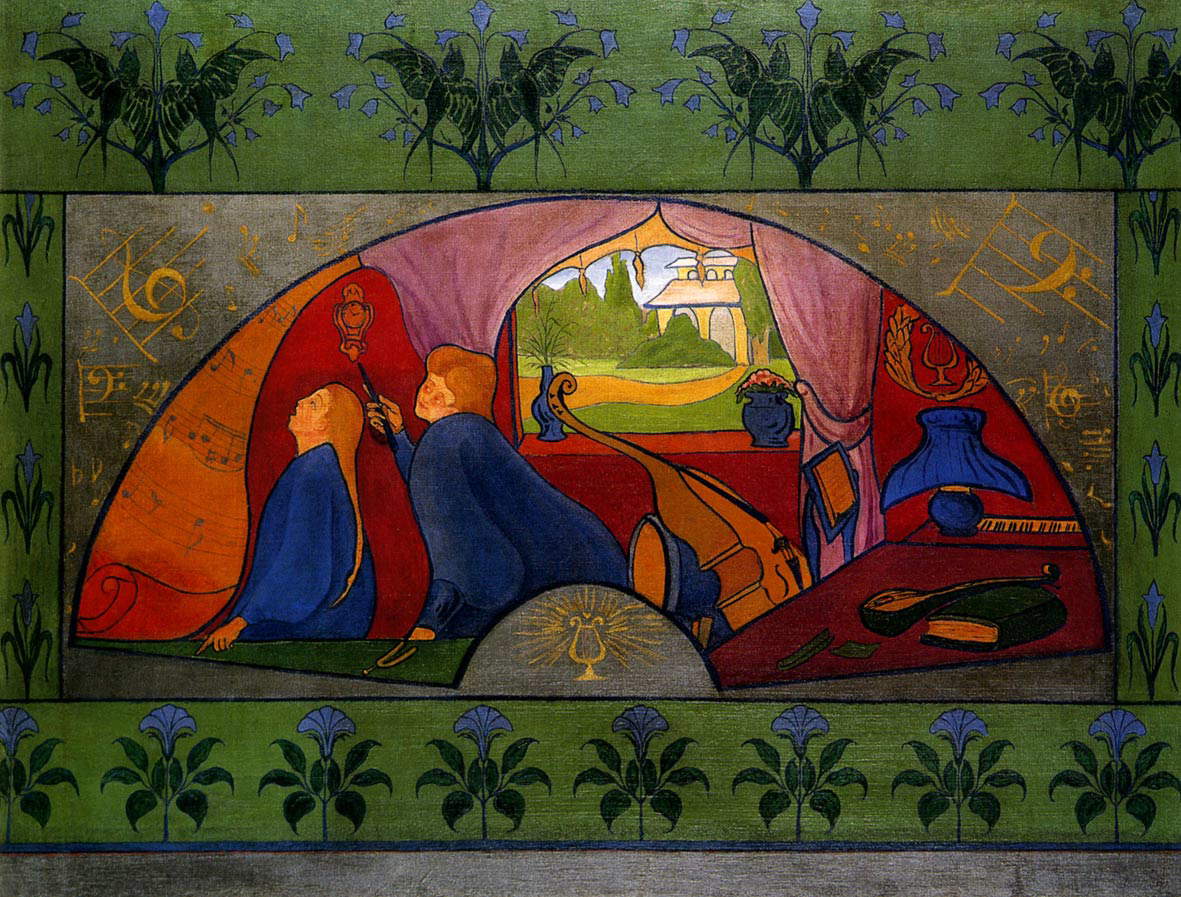 |
| Paul Ranson, The Initiation into Music (1889; Private Collection) |
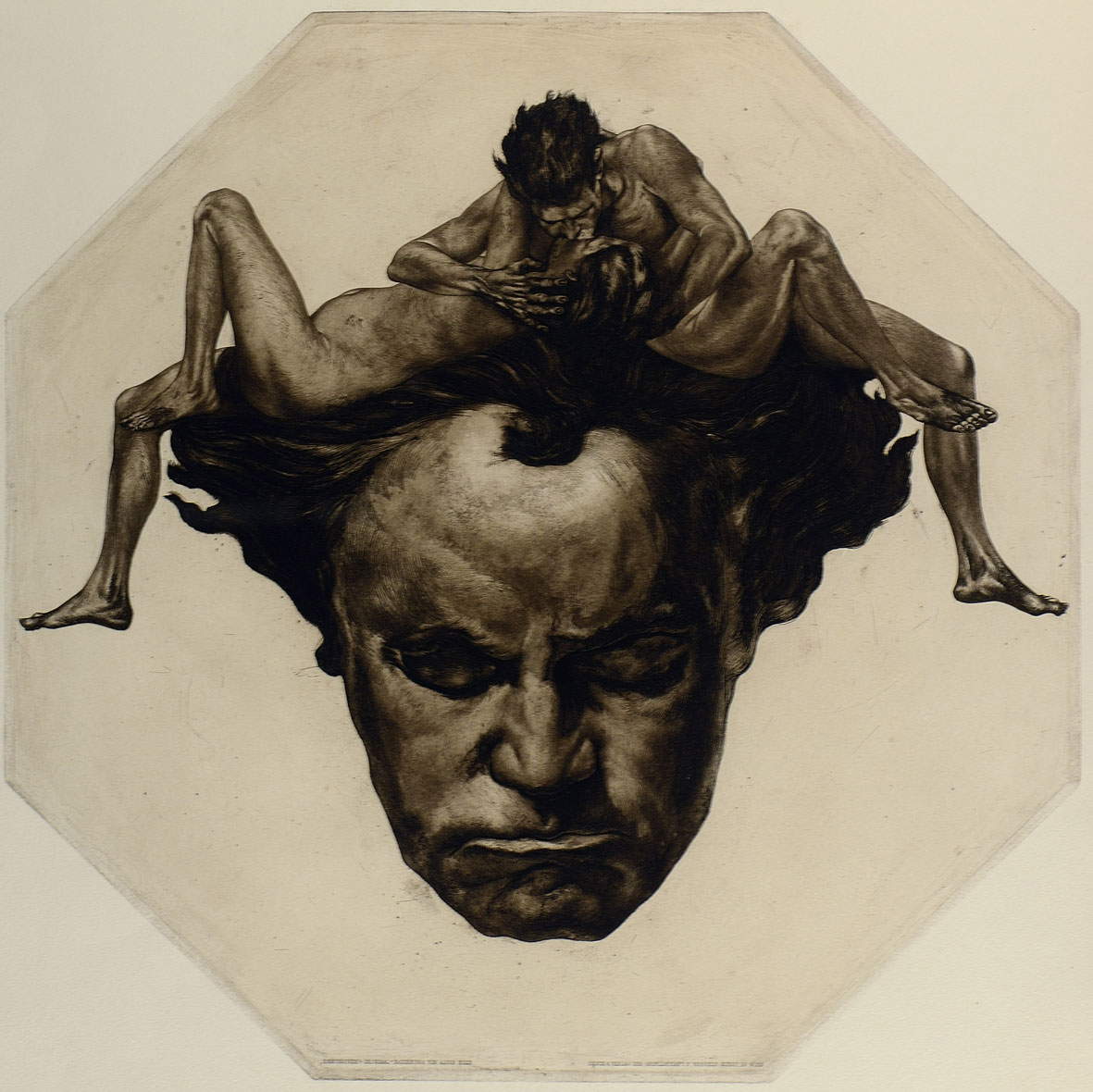 |
| Alois Kolb, Portrait of Beethoven - This Kiss to the Whole World (1909; etching) |
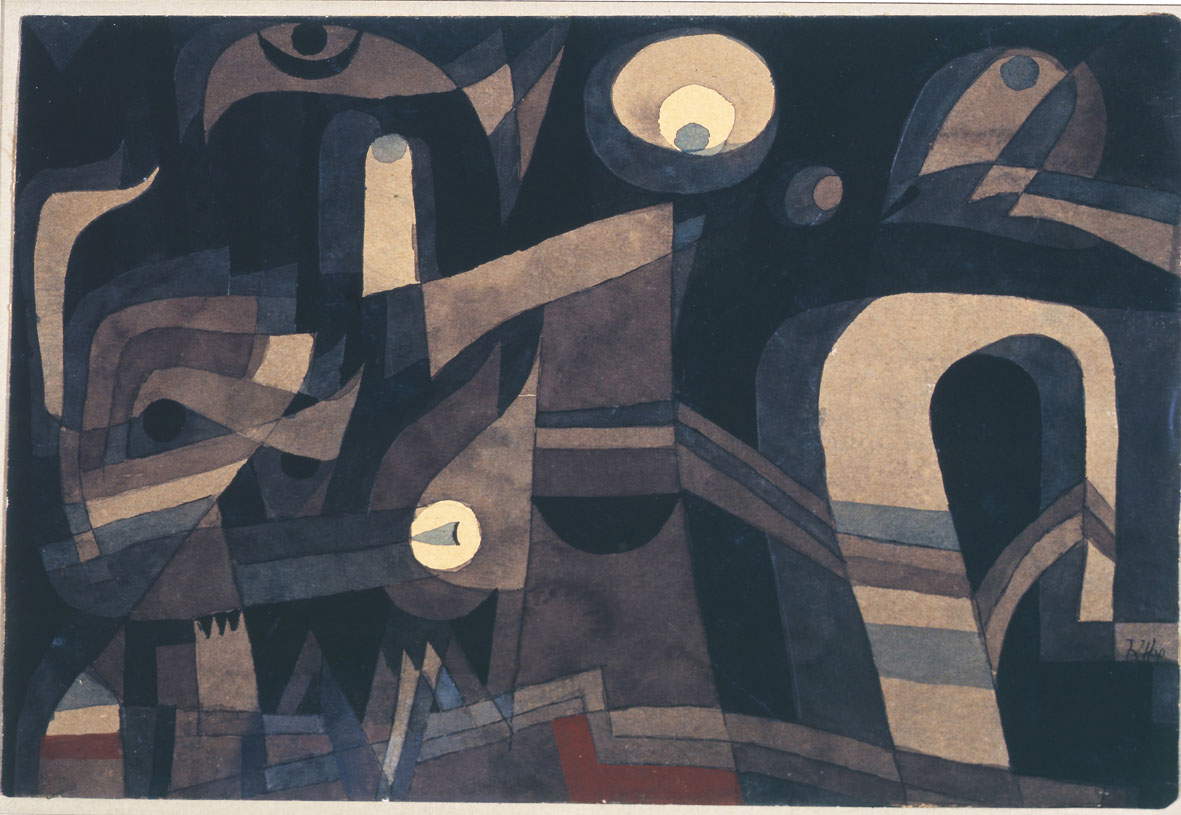 |
| Paul Klee, At night (1921; pencil, pen and watercolor on paper) |
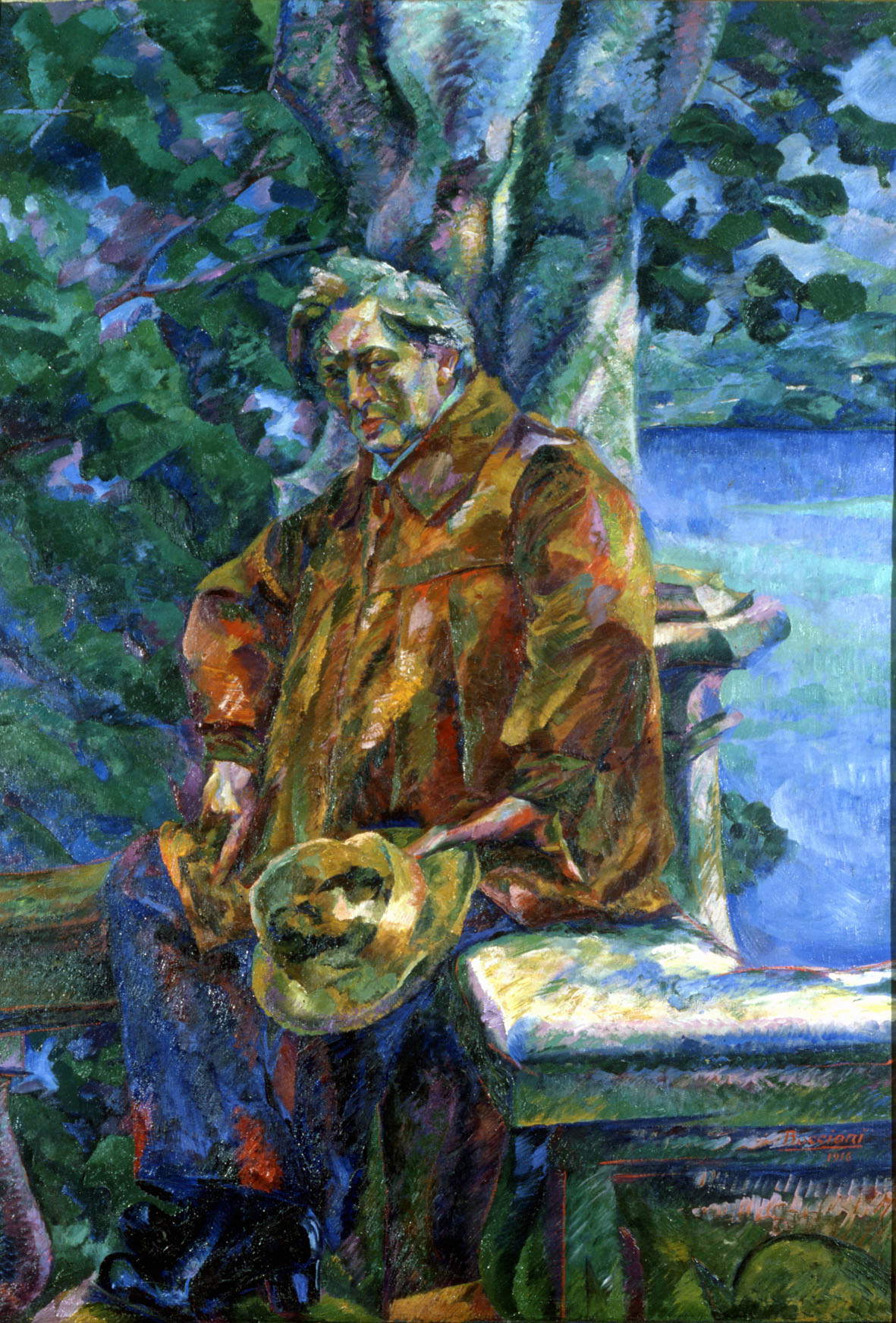 |
| Umberto Boccioni, Portrait of Maestro Busoni (1916; Rome, National Gallery of Modern and Contemporary Art) |
Wagnerism is one of the exhibition’s main themes, but there is also more: art’s tribute to Ludwig van Beethoven is explored (to whom the Vienna Secession dedicated an exhibition in 1902 in which Gustav Klimt ’s famous Beethovenfries inspired by theInno alla gioia from the Ninth Symphony was exhibited for the first time), and then again the avant-garde season, with Cubism bringing out the orientation of painters to favor musical instruments as subjects, and futurism in which the sound component is of great importance: Luigi Russolo, as well as a visual artist, was a composer and invented intonarumori.
An important part of the exhibition is devoted to Vasily Kandinsky, who, together with Paul Klee, makes music rise to a central role: in his painting, music is a paradigm of an art that wants to free itself definitively from the concept of representation. Important loans also arrive on Kandinsky: in particular, from the Theater Collection of theUniversity of Cologne comes a sequence of five works by Kandinsky, five paintings that constitute the set rehearsals for the staging of Pictures of an Exhibition, Modest Mussorgsky’s musical masterpiece. Written for piano, it is the Russian composer’s most famous work: soon to become the centerpiece of many pianists’ repertoire, it has been the subject of a large number of instrumentations by other composers (the best known and most performed version is the one orchestrated by Maurice Ravel).
“Kandinsky,” explains Paolo Bolpagni, “did not disdain to devote himself to work as a set and costume designer, though he never abandoned his particular perspective on the fusion of the arts. In April 1928 he staged at the Friedrich-Theater in Dessau, at the invitation of Georg Hartmann, director of the theater itself, a performance dedicated, precisely, to Modest Mussorgsky’s ’Pictures of an Exhibition.’ For the ’Pictures’ he curated the direction and designed the sets.” And the Roverella’s exhibition features the five paintings that constitute the set rehearsals for the show: Gnomus, Bydlo, The Hut on Baba Jaga’s Chicken Feet, Catacombas and The Great Gate of Kiev. “Just as,” says Bolpagni, “the composer had been inspired for his piano suite by a series of watercolors by the painter and architect Viktor Hartmann, similarly Kandinsky eschewed narrow figurative analogies, preferring to follow with plays of light and changing arrangements of colored forms the course of the music.” Also featured in the exhibition is a rare and valuable 1931 painting by Kandinsky titled Dunn und fleckig Souple (“Thin and Stained Flexible”) from a prestigious private collection.
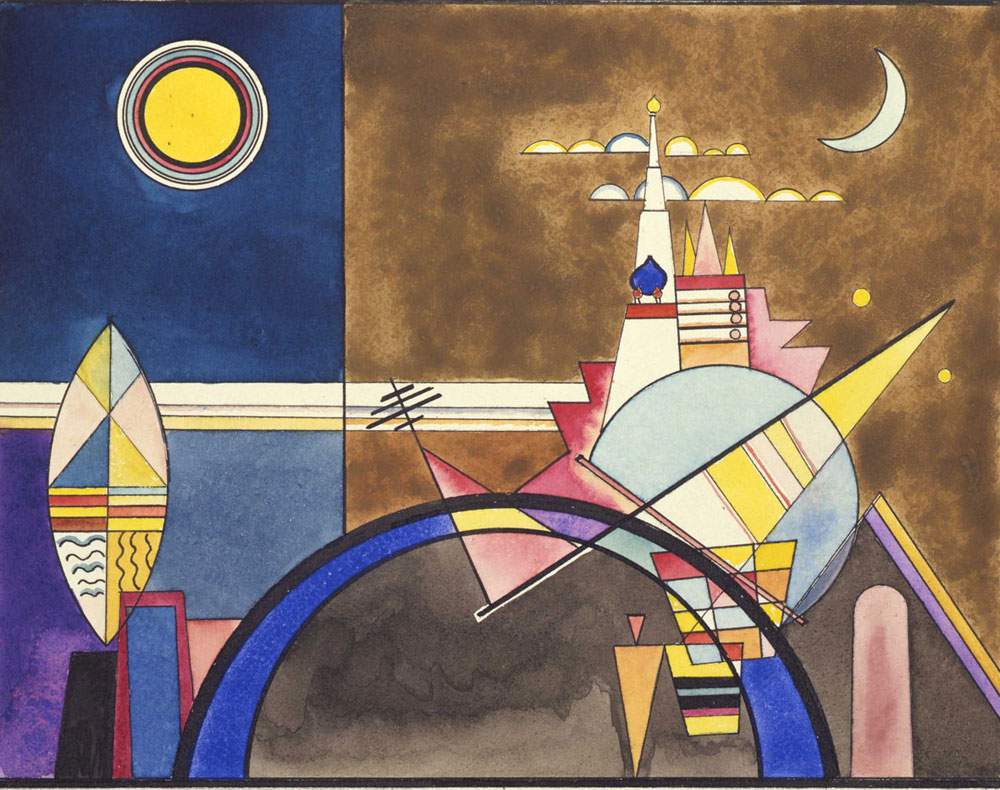 |
| Vasily Kandinsky, The Great Door (In the Capital Kiev) (1928; Cologne, Theaterwissenschaftliche Sammlung der Universität) |
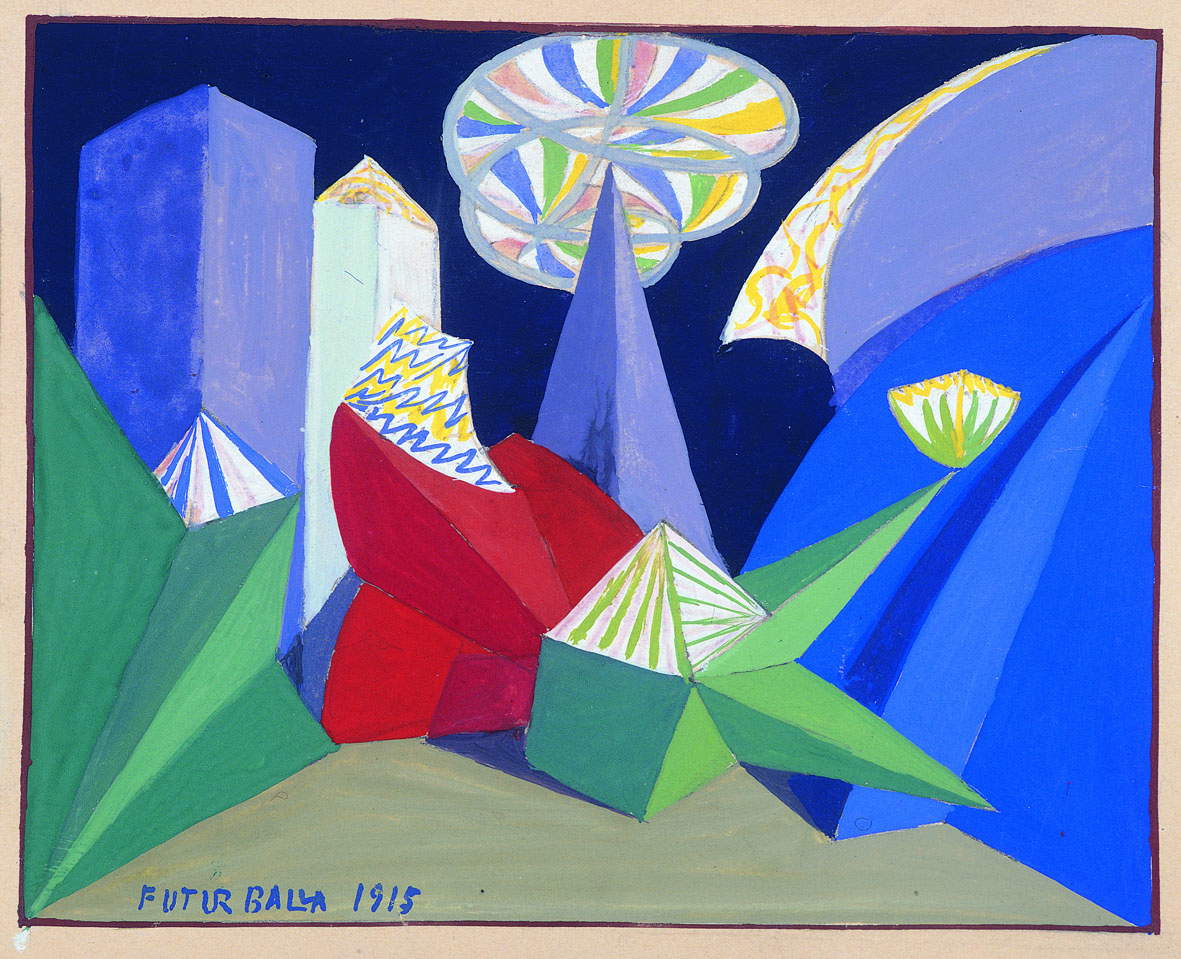 |
| Giacomo Balla, Sketch for the light-only ballet Feu dArtifice (1917; Milan, Museo Teatrale alla Scala) |
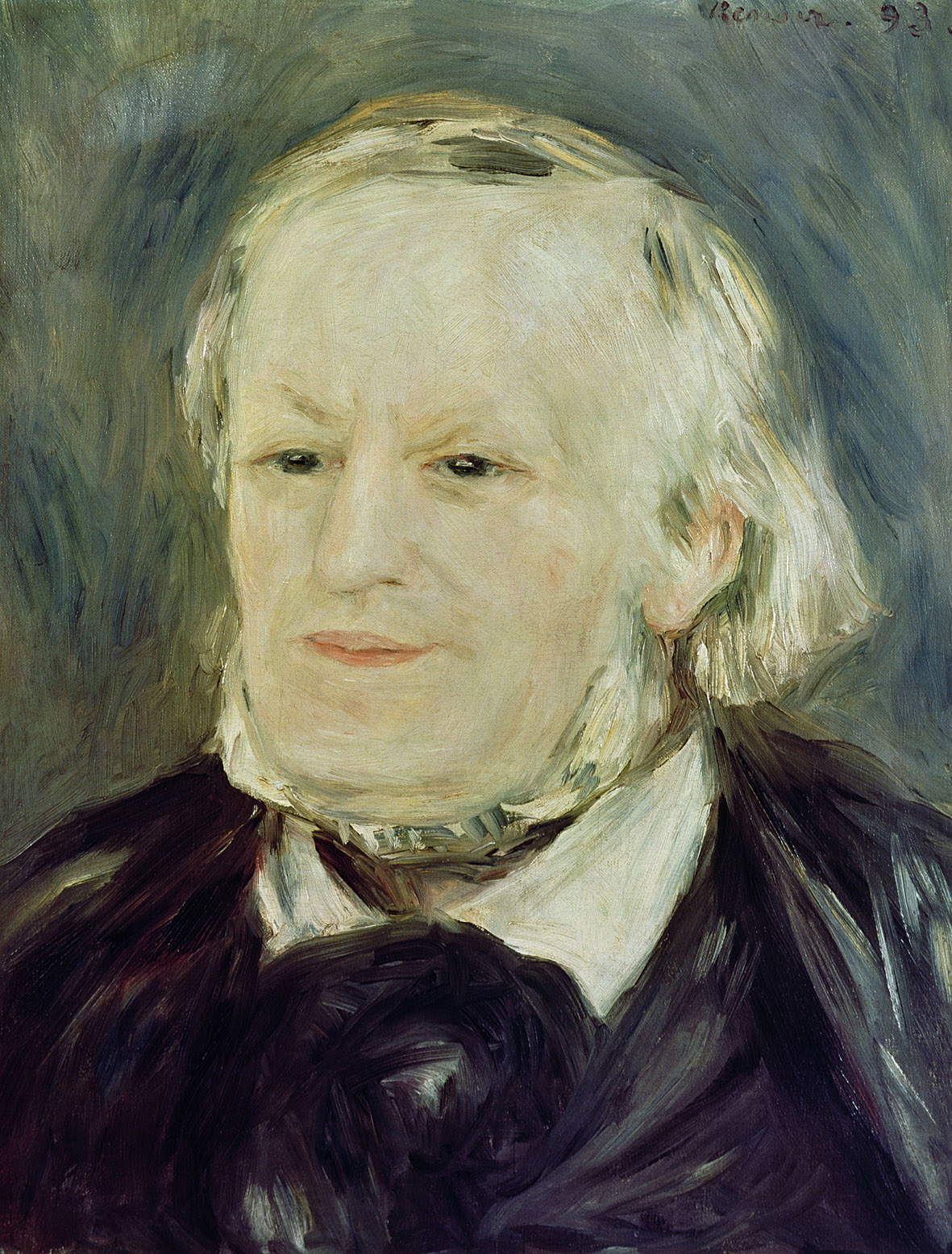 |
| Pierre Auguste Renoir, Portrait of Richard Wagner (1893; Paris, Bibliothèque Nationale de France) |
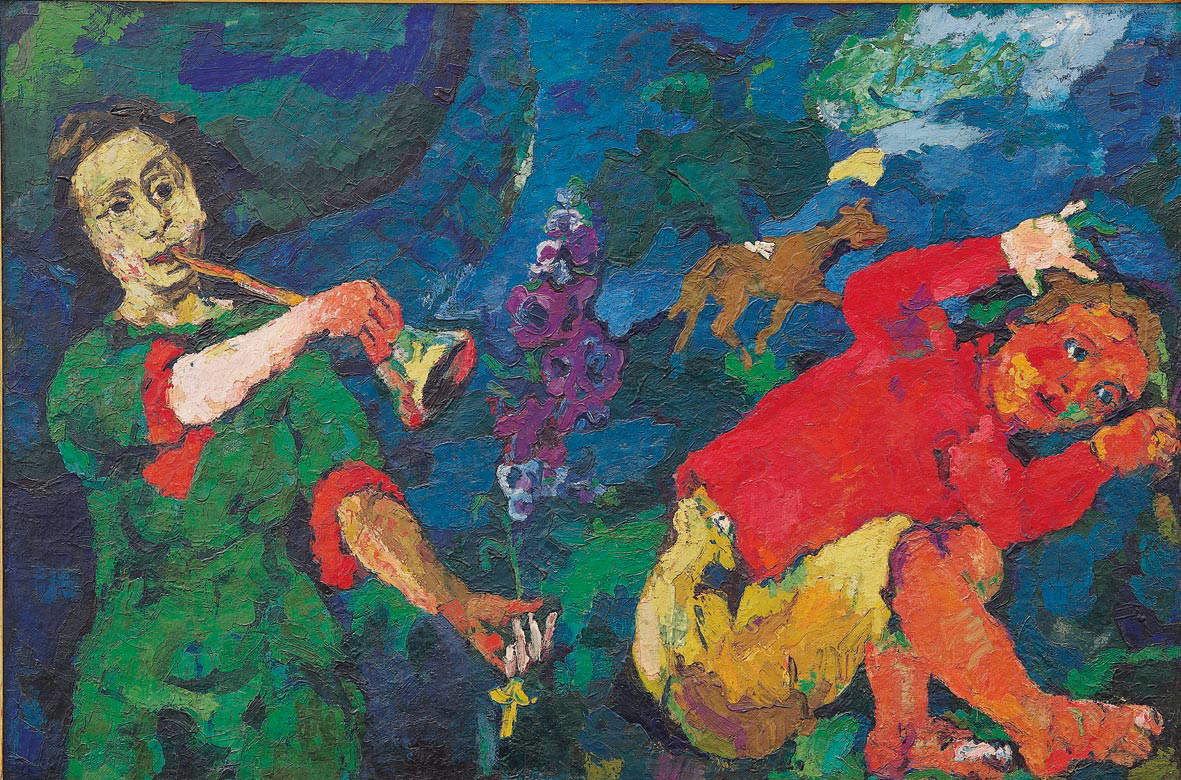 |
| Oskar Kokoschka, The Power of Music (1918; oil on canvas; Eindhoven, Van Abbemuseum) |
The exhibition continues with Neoplasticism: in this movement, too, there is an important presence of music, particularly as a reminder, in works by Piet Mondrian and Theo van Doesburg, of the rhythms of modern dance. The season of the historical avant-gardes is closed by Dadaism and Surrealism, where the sound component manifests itself in various ways: with Kurt Schwitters in the Ursonate, with Francis Picabia in the famous masterpiece Music is like Painting, while Salvador Dalí offers an example of reference to the piano as a function of psychic automatism exercised in the absence of the control of reason, to reveal the utentic workings of thought.
Seeing Music. Larte from Symbolism to the Avant-Garde therefore aims to highlight the long history of relationships, interweavings and correspondences between music and the visual arts, emphasizing the infinite, original facets of the interactions between the musical element and the visual arts and offering emblematic examples of both arts with what from the very declarations is intended to be an “exhibition-show.”
The exhibition opens Monday through Friday from 9 a.m. to 7 p.m., Saturdays, Sundays and holidays from 9 a.m. to 8 p.m. Reservations required: you can purchase tickets in advance by logging on to the official Palazzo Roverella website.
 |
| From Kandinsky to Boccioni, major exhibition in Rovigo on links between art and music |
Warning: the translation into English of the original Italian article was created using automatic tools. We undertake to review all articles, but we do not guarantee the total absence of inaccuracies in the translation due to the program. You can find the original by clicking on the ITA button. If you find any mistake,please contact us.